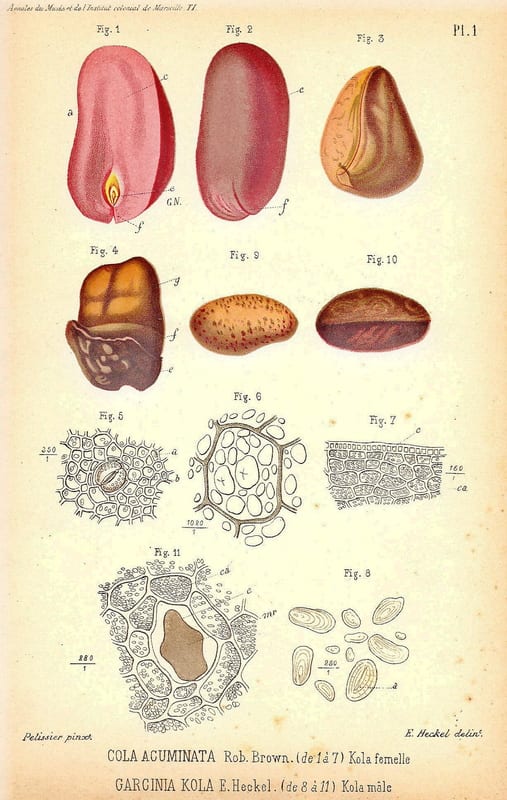
🌿 Morphology
🌞 Growing conditions
🌍 Origin and family
🌾 Uses
Warning: Despite the care taken in writing this sheet, it is essential to cross-reference sources before using or consuming any plant. When in doubt, consult a qualified professional
Permaculture uses
The seeds are chewed as a stimulant and appetite suppressant. They are also used medicinally for coughs, sore throats, and as a general tonic. The bark and roots are also used medicinally. In the garden, it can serve as a shade tree and its leaf litter can enrich the soil.
Permapeople description
Garcinia kola is a species of flowering plant in the family Clusiaceae. It is native to West and Central Africa and is known for its medicinal properties and bitter taste. The seeds are often chewed as a stimulant and for their various health benefits.
Botanical description
Garcinia kola is a medium-sized evergreen tree native to West and Central Africa, growing up to 20 meters tall. It has a dense, rounded crown and a straight trunk. The leaves are dark green, leathery, and elliptical. The flowers are small, white, and fragrant. The fruit is a rounded, yellowish-orange capsule containing 2-4 brown seeds, which are the edible and medicinally important part of the plant. The bark is greyish-brown and smooth when young, becoming fissured with age.
Companion planting
Information on specific companion planting is scarce. As a shade tree, it can benefit shade-tolerant understory crops. Avoid planting near plants that prefer full sun or acidic soils.
Propagation methods
Propagation is typically done by seeds. Seedlings can be slow to establish. Cuttings are also possible, but generally less successful. Grafting may also be employed to propagate desirable traits.
History and traditions
Bitter Kola has a long history of traditional use in West African cultures. The seeds are often offered to guests as a sign of respect and are chewed during ceremonies. It's considered a symbol of hospitality and unity. Traditional healers use various parts of the plant to treat a wide range of ailments, from coughs and fever to impotence and infertility.
Usage calendar
Flowering occurs during the rainy season (March to October). Fruits mature several months later, and harvesting typically takes place from December to February. Seed sowing is best done at the beginning of the rainy season. Pruning can be done during the dry season.
